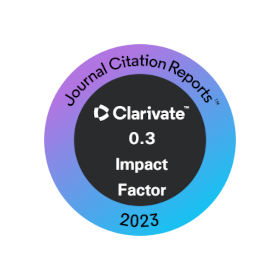Most read articles by the same author(s)
- Fernando Paz Pellat, Alejandro Cano, Martín Bolaños, José Chávez, Ma. Isabel Marin, Enrique Romero, Bi-conical reflectance factor in contrasting vegetal species: global modeling , REVISTA TERRA LATINOAMERICANA: Vol. 36 No. 1 (2018)
- Heriberto Díaz Solís, W. E. Grant, M. M. Kothmann, W. R. Teague, Fernando Paz Pellat, Martín Bolaños González, Estrategias para reducir las emisiones de GEI en agostaderos semiáridos de México , REVISTA TERRA LATINOAMERICANA: Vol. 34 No. 1 (2016)
- Fernando Paz Pellat, Edgardo Medrano Ruedaflores, DISCRIMINACIÓN DE COBERTURAS DEL SUELO USANDO DATOS ESPECTRALES MULTI-ANGULARES DEL SENSOR POLDER-1: ALCANCES Y LIMITACIONES. , REVISTA TERRA LATINOAMERICANA: Vol. 34 No. 2 (2016)
- Fernando Paz Pellat, Edgar Medrano, SPECTRAL MULTI-ANGULAR PATTERNS OF GLOBAL LAND COVER CLASSES USING POLDER-1 REMOTE SENSOR , REVISTA TERRA LATINOAMERICANA: Vol. 33 No. 2 (2015)
- Fernando Paz Pellat, Martín Enrique Romero Sánchez, Enrique Palacios Vélez, Martín Bolaños González, José René Valdez Lazalde, Arnulfo Aldrete, Alcances y limitaciones de los índices espectrales de la vegetación: marco teórico. , REVISTA TERRA LATINOAMERICANA: Vol. 32 No. 3 (2014)
- Fernando Paz Pellat, Minimization of atmospheric effects on the ISVI spectral vegetation index , REVISTA TERRA LATINOAMERICANA: Vol. 36 No. 1 (2018)
- Fernando Paz Pellat, Sara Covaleda, Claudia Hidalgo, Jorge D. Etchevers B., Francisco Matus, Modelación simple y operativa de la distribución del carbono orgánico por fracciones físicas en los suelos. , REVISTA TERRA LATINOAMERICANA: Vol. 34 No. 3 (2016)
- Fernando Paz Pellat, Distribución del carbono orgánico en los diferentes tamaños de partículas del suelo: modelo simple de cinética lineal. , REVISTA TERRA LATINOAMERICANA: Vol. 32 No. 2 (2014)
- Lucila González Molina, Jorge D. Etchevers Barra, Fernando Paz Pellat, Fernando Carrillo Anzures, Miguel Acosta Mireles, Aurelio Báez Pérez, Desempeño del modelo Rothc-26.3 a nivel de parcela en México. , REVISTA TERRA LATINOAMERICANA: Vol. 34 No. 3 (2016)
- Víctor Manuel Salas Aguilar, Antonia Macedo Cruz, Fernando Paz Pellat, Carlos Ortiz Solorio, Enrique Palacios Vélez, Modelación no lineal de la separación del flujo base en subcuencas de Chiapas, México. , REVISTA TERRA LATINOAMERICANA: Vol. 33 No. 4 (2015)
















